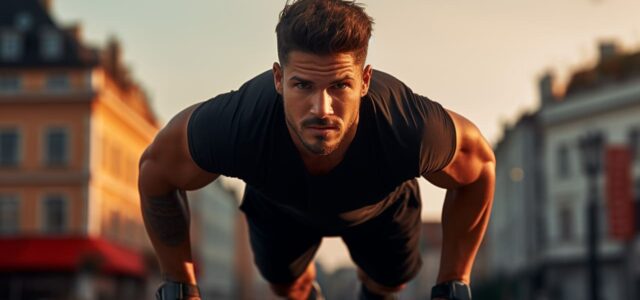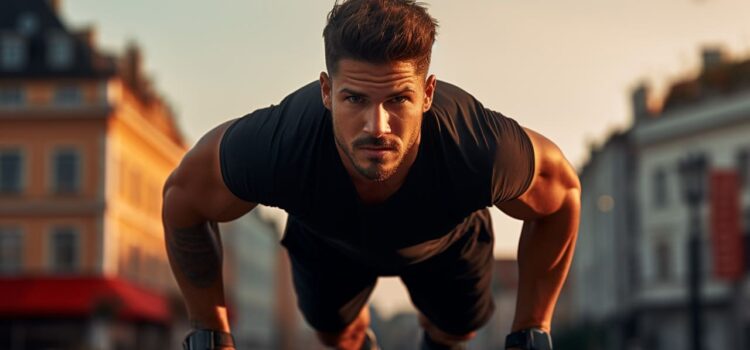

Dynamic vs. Static Stretching: Unraveling the Power of Flexibility Techniques
Running and Training Tips November 10, 2023 admin 0

Hey, fellow runners and stretch enthusiasts! Let’s get down to business – or should I say stretchiness? Over the years, I’ve witnessed many runners argue, sometimes quite heatedly, over which is better: dynamic or static stretching. It’s like the age-old debate of who’d win in a foot race, the tortoise or the hare? (Hint: Always bet on the tortoise!)
In this article, I’m going to settle the score and reveal the truths, the myths, and the outright funny misconceptions about these two popular forms of stretching.
The Basics: What’s the Big Stretch?
Before we dig deeper, let’s lay down the foundation.
Dynamic Stretching involves moving parts of your body and gradually increasing reach, speed of movement, or both. Think of it as a warm-up dance party for your muscles.
Static Stretching, on the other hand, is where you stretch a specific muscle or group of muscles to its farthest point and then hold that position. Like taking a long, relaxing yoga pose after a hectic day.
Dynamic Stretches: Let’s Get Moving!
Ah, dynamic stretches! They’re like that energetic friend who always gets you up and dancing, even when you think you have two left feet.
Benefits:
- Warms Up the Body: Dynamic stretches increase body temperature, preparing your muscles for activity.
- Improves Athletic Performance: Several studies have shown that dynamic stretching can improve power, agility, and strength.
- Mimics Sports Movements: They often replicate the movements you’ll perform, making them perfect before an activity.
Examples:
- Leg Swings: Hold onto a wall, swing one leg forward and backward, then side to side.
- Arm Circles: Extend arms out to the side and make small to large circular motions.
- High Knees: While jogging, lift your knees high towards your chest.
Static Stretches: Embrace the Stillness
Remember that peaceful feeling of stretching out on the couch after a long run? That’s the magic of static stretching.
Benefits:
- Improves Flexibility: Hands down, it’s one of the best methods to increase flexibility.
- Relaxes the Muscles: After an intense workout, static stretches help relax the muscles and reduce post-exercise soreness.
- Mental Relaxation: It can be a meditative experience, allowing for mental relaxation and focus.
Examples:
- Hamstring Stretch: Sit on the floor, legs extended, and reach forward.
- Quad Stretch: Stand tall, bend one knee, and pull your ankle towards your glutes.
- Shoulder Stretch: Extend one arm across your body and gently pull it towards your chest.
Dynamic vs. Static Stretching: Which to Use When?
Okay, it’s showdown time!
- Before a Run or Workout: Choose dynamic stretches. They warm up your muscles and prepare them for the action. Imagine it as revving up your car’s engine on a chilly morning.
- After a Run or Workout: Static stretches are your go-to. They help reduce muscle tightness and prevent you from walking like a robot the next day.
Dynamic stretches involve active movements that warm up the body and increase range of motion. They are excellent for preparing the body before physical activity or sports.
Static stretching, on the other hand, involves holding a position to stretch a specific muscle or muscle group. It is beneficial for improving flexibility and is typically done after physical activity, as part of a cool-down routine.
Knowing when to use dynamic or static stretching can optimize your performance and prevent injuries.
Conclusion: It’s Not a Competition, It’s a Partnership
In the world of dynamic vs. static stretching, it’s not about picking a winner. It’s about understanding when each type shines brightest. Both have their own unique superpowers, and when used correctly, they complement each other beautifully.
Remember, the key to a good stretching routine is consistency. Every bit counts whether you’re swinging those legs or holding that deep stretch. And, if ever in doubt, just think about our tortoise and hare. Slow, steady, and consistent always win the race…or at least make you more flexible!
Until next time, stay stretchy, my friends! 🏃♂️🤸♀️🧘♂️
No comments so far.
Be first to leave comment below.